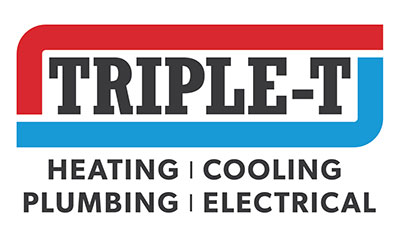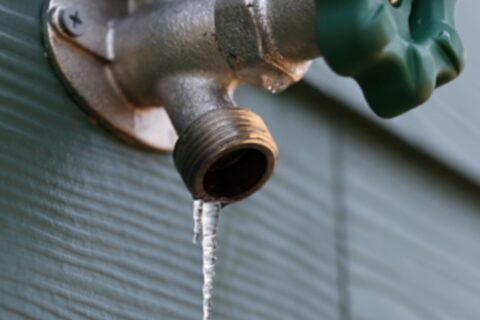How to Remove a Shower Drain Cover
Showering is an everyday ritual for most people, a rejuvenating cleanse that helps you start the day off right. However, a clogged shower drain can turn a relaxing routine into a frustrating chore. In this guide, you’ll learn how to remove a shower drain cover—a crucial first step when dealing with pesky blockages—plus tips to clean the drain once the cover is off.
Before Removing a Shower Drain Cover
To successfully remove a shower drain cover, you first need to determine what type of cover you have. Here are some common, easy-to-remove styles:
- Snap-on covers have a snap-on design and can usually be removed by simply pulling them off.
- Flip-it covers are easily removable and don’t require a screwdriver.
- Pop-up covers often have a lever control at the faucet. Alternatively, you may need to push down to lock them in place and pull up to unlock them again. These covers typically pull straight off, though they may require a bit of wiggling.
- Lift-and-turn covers have a small knob on top that you can turn. Try lifting the cover while simultaneously turning counterclockwise. If it comes off, you’ve got a lift-and-turn drain cover.
Don’t see your type of shower drain cover listed here? Read on to learn how to remove trickier styles.
Helpful Tools for Shower Drain Cover Removal
Equipped with the right tools, the process should be smooth and relatively effortless. Here are the tools you may need to remove your shower drain cover:
- Screwdriver
- A soft, clean cloth
- Lubricant (like WD-40)
- Utility knife
- Needle-nose pliers
- Duct tape
- Wrench
How to Remove a Shower Drain Cover
Here are the step-by-step instructions for removing more complicated drain covers:
- Screw-in and grid covers are held in place by one or more screws. Start by removing the screws using a screwdriver. Consider holding the screwdriver with a cloth for a better grip. If the screws are stuck, spray them with lubricant. Once the screws are out, you should be able to lift the cover from the drain opening. Use a utility knife to help pry up the cover, if necessary.
- Plunger-type covers are similar to the pop-up style, but they remain in place and are not meant to be removed regularly. Even so, you can still take them off with a bit of effort. Unscrew the top cap, followed by the shaft cylinder. Next, use pliers to take out the plunger. If needed, wrap the pliers with duct tape to prevent damaging the finish.
- Push/pull (toe-touch) covers are easy to open and close with the touch of your toe. To remove this style of drain cover, unscrew the cap by hand or with a wrench to remove it from the opening. Remember—lefty-loosey! If it doesn’t come free, look for a screwdriver slot to remove the entire mechanism.
Cleaning Out a Clogged Shower Drain
Once you have removed the shower drain cover, it’s time to tackle the clog. Avoid chemical drain cleaners, which can harm your pipes and the environment. Instead, try one of these methods for cleaning a clogged shower drain:
- By hand: This method might not be the most pleasant, but it can be effective. Don rubber gloves to protect your hands. Then, carefully reach into the drain and pull out as much hair and gunk as you can. Discard the debris in a trash bag.
- Using needle-nose pliers: If the clog is stubborn or located deeper than you can reach, needle-nose pliers are a handy tool. Open the pliers and lower them into the drain until they reach the clog. Close the pliers to grip the debris and slowly extract it from the drain. Repeat until you’ve removed as much buildup as possible.
- Using a straightened wire coat hanger: If you don’t have needle-nose pliers or the clog is particularly deep, try using a wire coat hanger. Straighten the hanger but leave a small hook on one end. Lower the hooked end into the drain and scoop out the blockage.
- Using a drain snake: You should be able to rent this specialized plumbing tool from your local hardware store. To use it, insert the cable into the drain. Push it further down until you encounter resistance. Twist the snake to help it latch onto the debris, then slowly pull it up and out of the drain. Pick the gunk off the cable and throw it in the trash. Repeat this process until you’ve cleared the blockage.
Remember to wash your tools thoroughly after using them to clean the drain. Also note that while these methods can be highly effective, they may not eliminate all clogs, especially if the blockage is severe or deep within the drain line.
When reinstalling the drain cover, reverse the steps you took to remove it. Ensure the cover is securely fastened, but be careful not to overtighten any screws.
Schedule Shower Drain Cleaning or Replacement
While DIY methods are effective, there are times when you might need a professional touch. Whether you’re uncomfortable performing the tasks yourself, or drainage problems persist despite your best efforts, a plumber can provide expert help.
Triple T Heating, Cooling & Plumbing is a partner you can trust, serving Utah County since 1974. We bring superior customer service, high-quality work, and exceptional expertise to every job we perform. Our professionals are always ready to assist, with 24-hour response times when you need us most. So the next time you require shower drain cleaning or drain replacement services, please call us at 801-798-7711 or contact us online. We’re ready to help make your shower experience stress-free once more!


